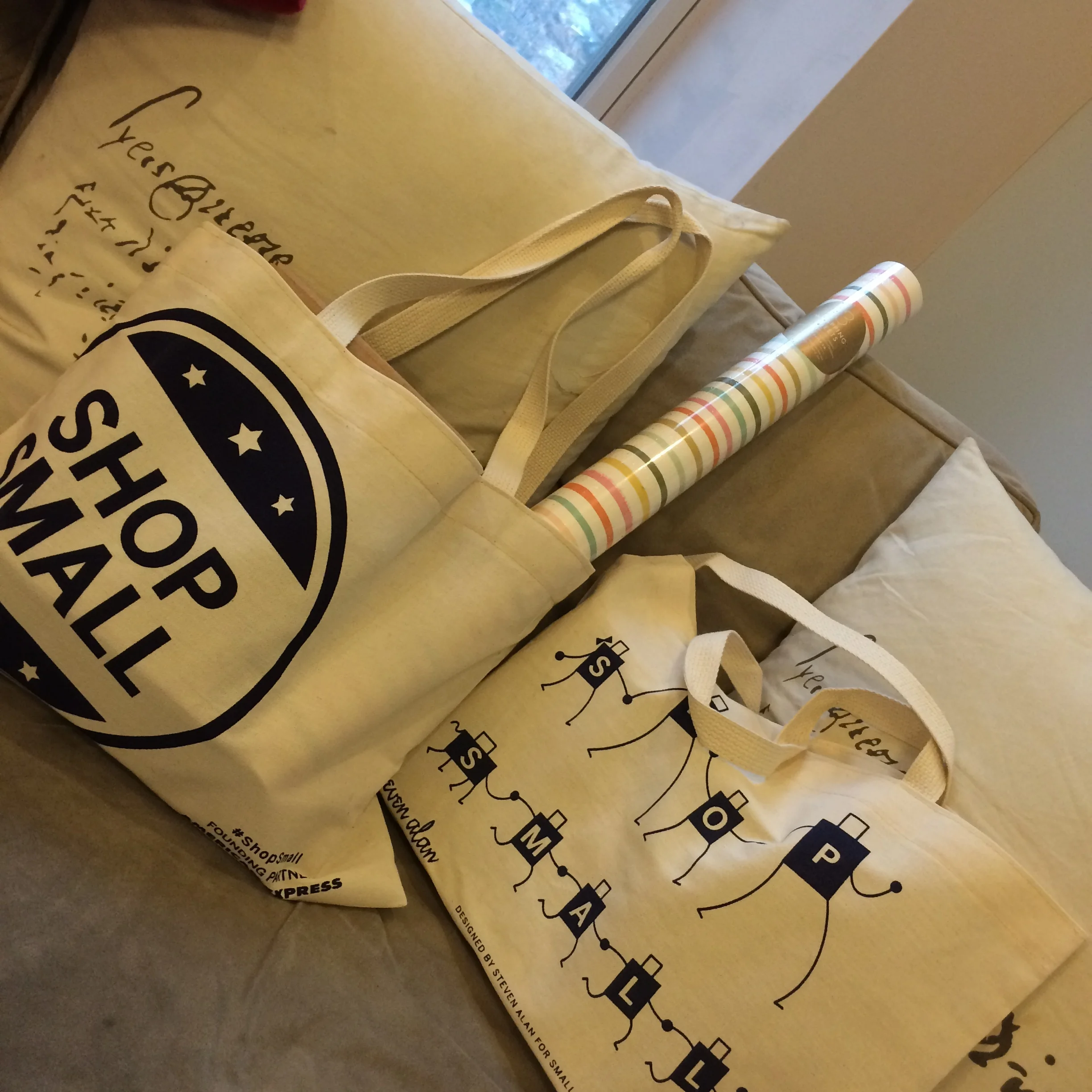How Uniqlo Will Show Your Body Temperature Rise In The Mirror And More
/What You Can Learn From The PSFK Future of Retail
I attended the PSFK Future of Retail event last week in NYC.
Even though the event had a focus on the retail industry, all 10 pillars can equally be applied in different industries. In the end, it comes down to understanding the human behavior of psychology and choice, the importance of communities and relationships, and how you use it to create engaging and personalized experiences in person and across different channels.
The speakers at the NYC event last week were all fantastic. The stories were the perfect complement to the pillars. I had read a few articles about MikMak prior to the event; however, it was much more helpful to hear the story behind the brand from the founder, Rachel Tipograph. It is a perfect example of how a brand can eliminate obstacles.
Here are the 10 pillars with key trends and brand examples shared by PSFK - along with a few of my comments.
1. Create Confidence
- PSFK Examples: The Pirch, Sephora
- PSFK Key Trends: Product Immersion, Guided Recommendations
I am a big fan of Uniqlo. Their Heattech apparel is a Winter necessity for layering. They now have smart mirrors to validate the technology and create confidence for customers in the stores. To learn more about strategies that contribute to online shopper confidence, check out this article.
2. Perfect Partnership
- PSFK Examples: Virgin Hotels x Gap, Insta Cart x All Recipes
- PSFK Key Trends: Cross-Channel Rewards, Additive Experiences
During the event, PSFK shared the partnership where you can have a Gap wardrobe delivered to your Virgin Hotels room. Westin and New Balance partnered together to help travelers keep their commitment to a healthy lifestyle with exercise. No more excuses for skipping that workout.
3. Optimize Ownership
- PSFK Examples: Patagonia, GoEnjoy
- PSFK Key Trends: Cultivated Expertise, Always-On Support
Salesforce.com is a great example of a company that optimizes ownership. Salesforce.com Service Cloud enables companies to deliver a superior support experience. The Salesforce.com app exchange provides clients with integration options galore to complement the platform. Customers get the most value with products they understand. Salesforce.com new training platform Trailheads cultivates experts with gamification and badges. The best part, it’s free!
4. Democratize Access
- PSFK Examples: StitchFix, Rebecca Minkoff
- PSFK Key Trends: Customer Concierges, Aspirational Experiences
Customer concierges and aspirational experiences were two key trends highlighted. Stitch Fix and Trunk Club are just two examples of businesses that promote your very own ‘personal shopper’ that curates items specific for you. If you prefer the aspirational experiences, econsultancy.com talks about 3 examples of brands experimenting with virtual reality.
Finally, for your next trip, book a stay at a Marriott to experience the first ever VRoom Service. Samsung and Marriott partner to bring virtual reality to your room.
5. Eliminate Obstacles
- PSFK Examples: Starbucks, Hointer & Macys, MikMak
- PSFK Key Trends: Anywhere Purchase Platforms, Shop Ahead, One-Click Transactions
Eliminating purchase obstacles is a pretty popular one. How can you make it an effortless experience for the shopper? Amazon one click purchase is downright dangerous!
You know the feeling of seeing the slip from UPS or Fedex when you missed a shipment? The people at Shyp relate to that feeling as well as the need to keep up with the nomads that move every year (I bet a lot of college and city dwellers fit into that category). Shyp just announced that it will eliminates addresses. When you use the app to ship, you only need to know the username of the recipient.
We all know the hardest part about online shopping is the fear that it will not fit. Unless you are familiar with the brand and sizing, you may not be willing to drop the cash or credit for the item. Fear no more, Try is a new service that partners with brands so you can try the clothes on prior to the purchase. Bloomingdales, Barneys, J Crew, Reformation, Topshop, and Zara are just a few on the list of the retailers.
6. Promote Transparency
- PSFK Examples: Amazon Elements
- PSFK Key Trends: Storied Products, Reciprocal Relationships
People want to know the origin of the product. Where was it made? Was it fair trade? There is a story about the lifecycle of each garment - for both the materials and the process. We should understand the impact it has on the environment, and the quality. Zady is establishing a new standard with its clothing line. They are educating consumers about the product, people, and planet. Sustainability is not only important for the food we consume, it is in the clothing we wear.
7. Encourage Advocacy
- PSFK Examples: Sony, Chevrolet x Whatsapp
- PSFK Key Trends: Shopper-Led Exchange, Crowd Buy-In
In the world of social media and influencers, it is no wonder there is a focus to encourage advocacy. Every brand should build this into their DNA. In one of my blog posts, I shared how you can learn from Bonobos and master customer advocacy with three simple tips. For additional tips, this article on ways to identify potential brand champions, is also a good one.
8. Cultivate Community
- PSFK Examples: Bjornborg, Audi
- PSFK Key Trends: Cultural Hubs, Collaborative Marketplaces
More brands are creating methods for customers to be a part of the community or featured on the website when they tag social media pictures like #revolveme for Revolve Clothing. During Spring Break this year, American Eagle had the world’s largest unretouched selfie in Miami as part of its ‘Love Your Real Selfie’ campaign.
Second hand store, Vestiaire Collection launched #theonethatgotaway campaign. They invite users to post a story about the piece of clothing that they saw - and never purchased. The hope is that one of the other 4 million users has that piece of clothing to sell.
All the links on Stylinity are shoppable. It is a collaborative community for brands and individuals that love to take a selfie. Stylinity has a StylePerks program that awards people when someone makes a purchase from their selfie.
9. Recognize & Personalize
- PSFK Examples: Walgreens, Moda Operandi
- PSFK Key Trends: 360-Degree Service, Predictive Assistance
People expect personalization. There is no reason why we should receive emails that are irrelevant to us. Brands need to have a clear analytics strategy to understand the customer and the appropriate actions. HBR recently did a good article on selecting an analytics vendor. Brands should also think about how they will leverage data across all channels to help drive the right degree of personalization for when and how to connect with each customer.
10. Deliver Delight
- PSFK Example: Kenneth Cole
- PSFK Key Trend: Insider Exclusives
Alice & Olivia and Tory Burch are two of my favorite brands. It is dangerous that they are just a few short blocks from one another. Not only do I love their style, both Stacey Bendet and Tory Burch are a true inspiration for building successful empires. As a frequent shopper, I get to enjoy pre-sale events and receive gifts in the mail during the holiday. Last year, I was so delighted when I opened a perfectly packaged copy of the Tory Burch Color book. And just a few weeks ago, Alice & Olivia delighted me with two free tickets to the Meatpacking Open Market kickoff event. Sometimes, you can also simply create the illusion of exclusivity as shared in this article.
I am excited to see the future of retail and how brands will balance the technology with the personalization. Even though I love technology, my loyalty is always with those that I can have a personal connection. Here is a post inspired by my experience with Alice & Olivia - a brand with authentic personality.
What do you think about the 10 pillars in the PSFK Future of Retail?
Yours Truly,
Randa Green

































